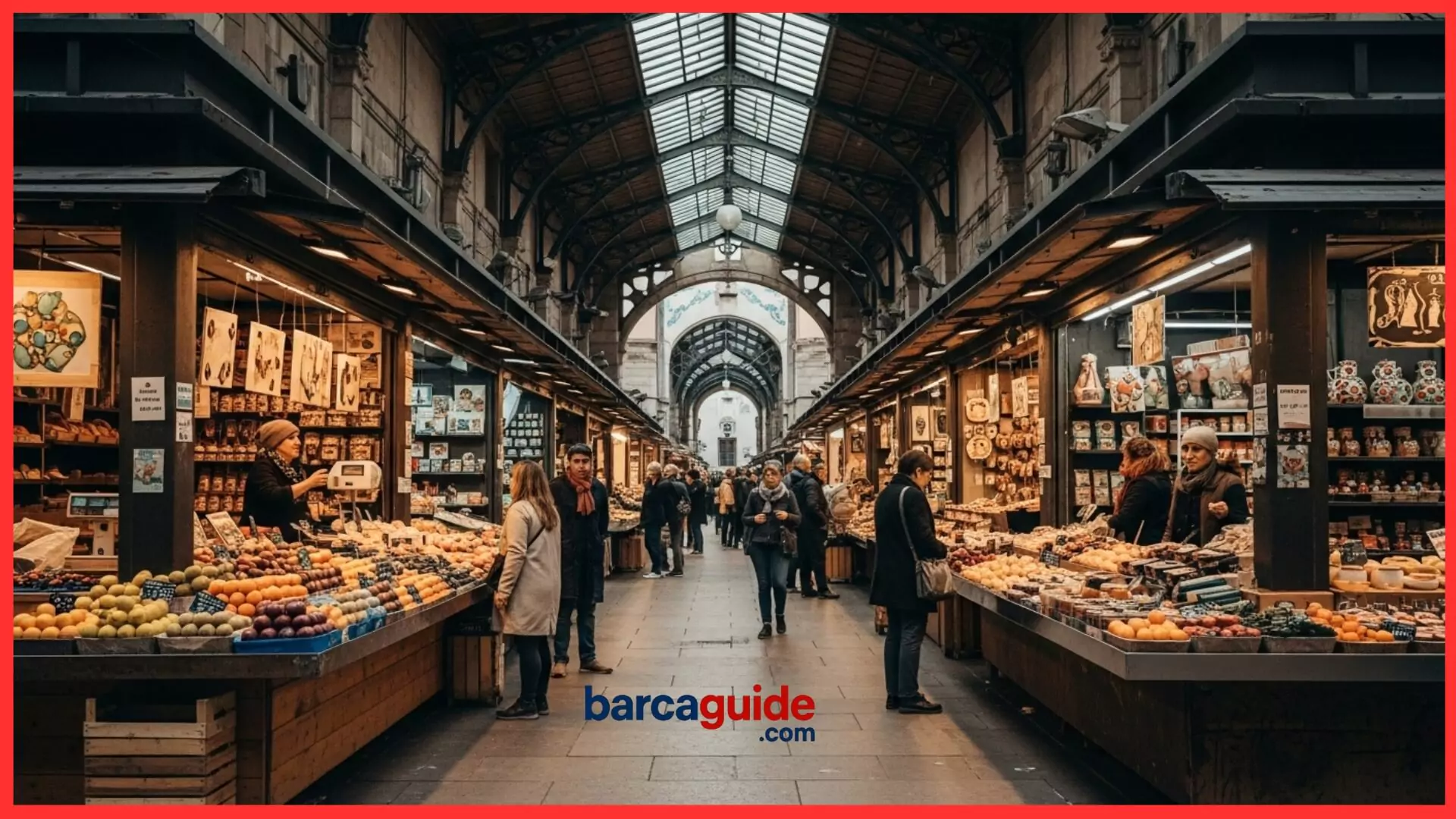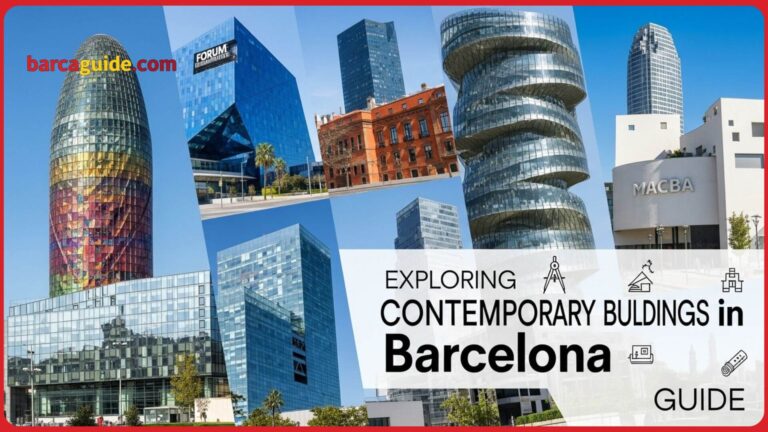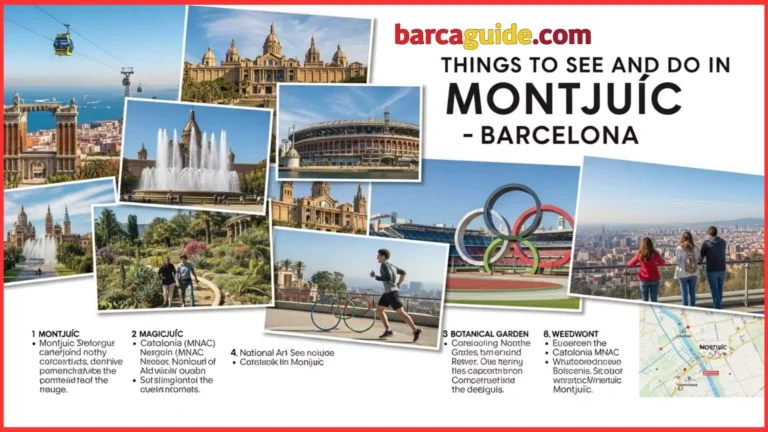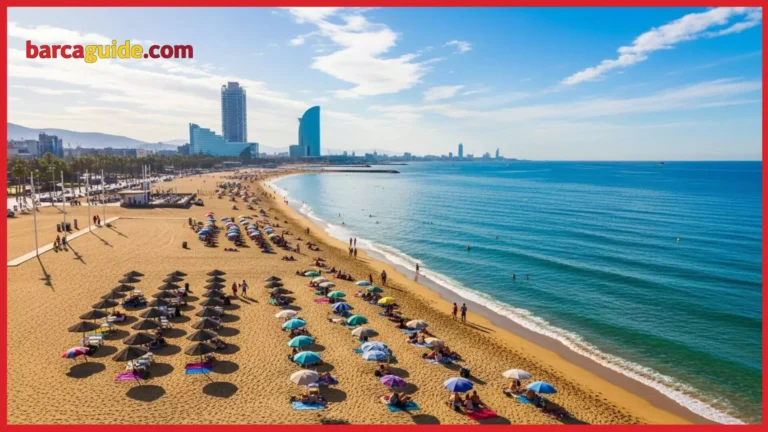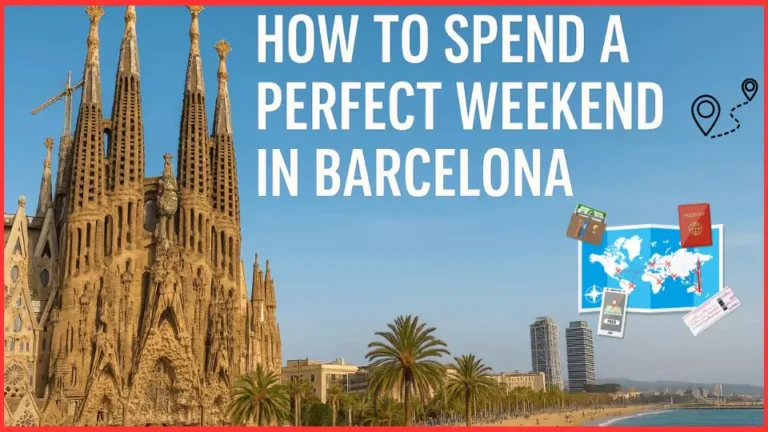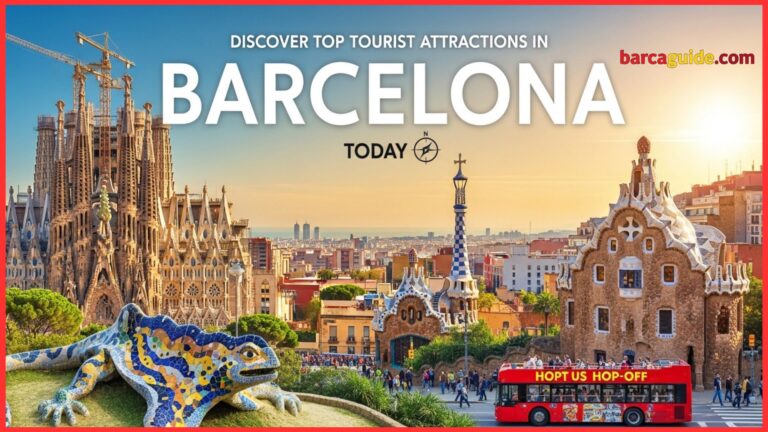Hidden Local Markets in Barcelona You’ll Love Exploring
We all know about La Boqueria, right? It’s everywhere on Instagram, packed with tourists taking selfies with jamón, and honestly? It’s gotten pretty touristy and overpriced. Don’t get me wrong—it’s still cool to see once, but if you want to experience Barcelona like a local, you’ve gotta venture beyond the obvious spots.
Here’s the thing: Barcelona has incredible neighborhood markets scattered all over the city where actual Barcelonians do their grocery shopping. These places are absolute gems, and most tourists completely miss them. You’ll find better prices, authentic vibes, and zero crowds fighting over the perfect food photo. Plus, you’ll get to chat with locals instead of being herded around like cattle.
Take my advice—pass on the tourist attractions and take a look at these lesser-known market gems. You’ll thank me (and so will your wallet, and your Instagram).
Why You Should Hit Up Local Markets Instead
Here’s why local markets are totally worth the detour from your typical sightseeing routine. First off, you’re getting the real Barcelona experience. These aren’t show markets—they’re where your Airbnb neighbors actually shop for dinner tonight.
The prices? Way better. We’re talking actual Barcelona prices, not the “hey, this person looks like a tourist” markup you’ll get elsewhere. I’m talking fresh produce that won’t break the bank, artisanal cheese that doesn’t cost more than your hotel room, and local specialties you can actually afford to try.
And here’s the cool part—you’re supporting real local families and businesses. A lot of these vendors have been running their stalls for generations. When you buy from them, you’re keeping these neighborhoods alive and authentic, which honestly makes you feel pretty good about your shopping choices.
Plus, no crowds! You can actually take your time, ask questions without holding up a massive line, and maybe even get some cooking tips from the vendors. It’s like having your own personal Barcelona food tour, minus the cheesy group dynamics.
Mercat de Sant Andreu
This one’s in the Sant Andreu neighborhood, and it’s got this super cozy, family vibe that’ll make you want to move in next door. It’s the kind of place where vendors know everyone’s name and probably their dog’s name too.
What I love about this market is how genuinely local it feels. The cheese guy will totally let you taste stuff before buying (score!), and the produce is exactly what ends up in real Catalan kitchens—not just the pretty stuff that looks good in photos.
But seriously, don’t sleep on the pastry section. We’re talking traditional Catalan sweets and savory treats that change with the seasons. It’s like a little bakery treasure hunt where everything’s made in small batches by people who actually care about what they’re doing.
Here’s my insider tip: grab a coffee at the little café area and just people-watch for a bit. You’ll see three generations of families shopping together, vendors giving parenting advice along with produce recommendations, and all sorts of neighborhood drama unfolding. It’s better than reality TV, honestly.
Mercat de la Concepció
This beauty is in Eixample, and wow—the building itself is Instagram-worthy with all that gorgeous 19th-century ironwork. But don’t let the fancy architecture fool you; it’s still a working neighborhood market.
The flower section here is absolutely insane (in the best way). We’re not talking gas station bouquets—this is serious flower business. Go in the morning when they’re setting everything up, and you’ll feel like you’ve stumbled into some secret florist wonderland.
The gourmet section is where things get interesting. Yeah, it’s a bit more upscale since it’s in a fancier neighborhood, but the quality is incredible. The seafood vendors know their stuff and will totally give you cooking tips if you ask nicely. Just don’t expect them to dumb it down—they assume you actually want to cook like a local.
Pro tip: This market fits perfectly into an Eixample walking tour. You can market-hop, then grab lunch at a nearby café, and pretend you’re a sophisticated local who definitely didn’t get lost three times finding the place.
Mercat de Sants
Sants is this cool residential neighborhood that feels super authentic, and the market totally reflects that vibe. It’s friendly, unpretentious, and the kind of place where you’ll get genuine recommendations instead of tourist-friendly suggestions.
The butchers here are legit artists. They’ll show you cuts you’ve never seen before and explain exactly how to cook them. Fair warning: they might assume you know more about cooking than you actually do, but hey, that’s how you learn, right?
I’m obsessed with their wine selection. These aren’t the bottles you’ll find at every tourist shop—we’re talking local wines from small producers that most visitors never discover. The vendors often let you taste stuff, and their recommendations are spot-on because they’re based on actual knowledge, not what sells best to tourists.
The seasonal stuff here is amazing too. Whatever’s actually growing locally right now is what you’ll find, which means you get to eat like the seasons actually matter. Revolutionary concept, I know.
Mercat del Ninot
This one got a fancy renovation recently, but somehow they managed to keep all the neighborhood charm while making everything bright and clean. It’s like the perfect balance of modern and traditional.
The meat vendors here are total pros—they’ll teach you about cuts and cooking methods you never knew existed. Plus, they’re super patient with foreigners who point at things and ask “what’s that?” approximately fifty times.
The fish section is where the coastal location really shows. These people know their seafood, and they’re not shy about sharing their expertise. Just be prepared for some strong opinions about how long to cook things and what absolutely should not be paired with what.
Here’s the fun part: there are these tiny restaurants inside the market where you can eat stuff made with ingredients from literally ten feet away. It’s casual, cheap, and the food is ridiculously fresh. Perfect for when you want to try something but have no idea how to cook it yourself.
Mercat de Les Corts
This market serves a super residential area, so you’re basically shopping alongside local families doing their regular grocery runs. Lots of older folks who’ve been coming here forever, which gives it this really authentic neighborhood feel.
The homemade food section is where things get special. We’re talking family recipes that have been passed down for generations—stuff you literally cannot find anywhere else. It’s like getting invited to someone’s grandmother’s kitchen, except you can actually buy the results.
The produce vendors here have serious connections with local farms, so everything is crazy fresh and actually seasonal. Shocking concept, right? You’ll discover vegetables and fruits that don’t exist in international supermarket chains.
Go on weekdays if you can. It’s way more chill, and you’ll get the full, authentic experience without any weekend chaos or special events that might make it feel less genuine.
Mercat de la Llibertat
This one is located in Gràcia, which is already the coolest, most artistic neighborhood in Barcelona, so of course, the market has a Gràcia vibe. It’s got a slightly bohemian, creative energy. Also, when you’re shopping, you feel the cultural experience of the grocery stores.
The seasonal produce here often includes organic and eco-friendly options, which fit the neighborhood’s whole environmentally conscious thing. The vendors actually know about sustainable farming and can tell you where stuff comes from, which is pretty cool if you care about that sort of thing.
The specialty meat section combines traditional techniques with modern ethical practices. Translation: delicious stuff that doesn’t make you feel guilty about your food choices. They work with small local farms that actually treat their animals well.
After you’re done shopping, definitely wander around Gràcia’s streets. The whole area is filled with independent shops, galleries, and cafés that perfectly complement the market experience. It’s like the entire neighborhood is curated for people who appreciate authentic, creative culture.
Don’t Miss These Pop-Up Markets
Barcelona’s got this whole rotating market scene that’s pretty amazing if you can time it right. These temporary markets showcase local vendors and seasonal stuff you won’t find anywhere else.
Palo Alto Market happens monthly and combines design vendors with incredible street food. It’s got this festival vibe that attracts locals and cool visitors who actually know what’s up. The food scene here is next level—think creative takes on traditional dishes by up-and-coming chefs.
Fleadonia in Raval is perfect if you’re into vintage finds and second-hand treasures. It’s not primarily a food market, but there are usually some specialty food vendors mixed in, plus it gives you great insight into Barcelona’s alternative culture scene.
Mercat de la Terra is the Slow Food movement’s Barcelona outpost in Poble-sec. If you care about sustainable food and want to meet actual producers, this is your spot. The vendors are super passionate about their products and love explaining their growing or production methods.
You’ll need to do a bit of research to catch these since they’re not daily, but totally worth it if you can make it work with your schedule.
How to Not Look Like a Total Tourist
Alright, here’s how to blend in and not accidentally annoy everyone. First: bring cash. Seriously, just do it. Many vendors still operate old-school, and small transactions go way smoother when you’re not fumbling with cards.
Get there early—like, actually early. That’s when locals shop, when everything’s freshest, and when you’ll get the real market energy. Plus, vendors are more chatty and helpful when they’re not dealing with the afternoon rush.
Learn a few basic Catalan phrases. Even just “bon dia” (good morning) and “gràcies” (thanks) will get you major points with vendors. They’ll remember you, give you better service, and maybe even let you try stuff before buying.
Don’t be that person taking photos of everything like it’s a zoo exhibit. These are working markets with real people doing real jobs. Be discreet with photos, ask permission for close-ups, and remember that vendors aren’t performing for your Instagram story.
Be flexible about timing and availability. These markets operate on local rhythms—lunch breaks happen, seasonal items come and go, and sometimes vendors just sell out of stuff because that’s how real markets work.
Barcelona’s hidden markets are where the magic really happens. You’ve got everything from the family vibes at Sant Andreu to the artistic energy of Gràcia’s market, plus all the architectural beauty and working-class authenticity in between.
Each one has its own personality and specialties, but they all share this amazing quality of being real places where real people live their actual lives. You’re not just shopping—you’re getting a peek into how Barcelona really works beyond all the tourist stuff.
The connections you’ll make, the random discoveries, and the stories you’ll have afterward are worth way more than any typical tourist experience. Plus, your friends back home will be super impressed when you casually mention your favorite neighborhood market in Barcelona.
So seriously, skip the guidebook favorites next time. Go where the locals go, try stuff you can’t pronounce, and discover the Barcelona that most visitors never see. Trust me, once you experience these authentic neighborhood gems, you’ll never want to go back to fighting crowds at the tourist markets.
Your Questions Answered
When should I actually go to these markets?
Early morning is your sweet spot—between 8-10 AM, you’ll get the best stuff and the most authentic vibe. Most open around 7-8 AM and close for that sacred Spanish lunch break around 2 PM.
Will anyone speak English, or am I screwed?
Don’t worry! Lots of vendors speak at least some English, especially in the fancier neighborhoods. But honestly, even basic Spanish or a few Catalan words will get you pretty far, and people are usually patient with foreigners trying their best.
Are these actually cheaper than La Boqueria?
Oh absolutely. We’re talking real local prices versus tourist prices. Your wallet will definitely notice the difference, and the quality is often better, too.
What do I need to bring?
Cash is essential, plus bring your own bags (locals always do). Comfortable shoes are smart since you’ll be walking around, and maybe download a translation app just in case.
Can I actually eat at these markets?
Some have little bars or cafés inside, and vendors sometimes offer samples, but these are primarily shopping spots. Think of it as gathering ingredients for your own Barcelona feast rather than a dining destination.
How do I get to these places?
Barcelona’s metro and bus system will get you everywhere you need to go. Most of these markets are pretty well connected, and honestly, the journey there is part of the fun—you get to see different neighborhoods.
Are they open every day?
Most run Monday through Saturday, with some vendors taking Monday mornings off. Sunday is usually quiet or closed entirely. Tuesday through Saturday gives you the full experience with all vendors present.
What makes these “hidden” exactly?
They’re not secret or anything, but they get way less tourist traffic than the famous spots. They’re just regular neighborhood markets that most visitors never think to seek out, which keeps them authentic and local.

